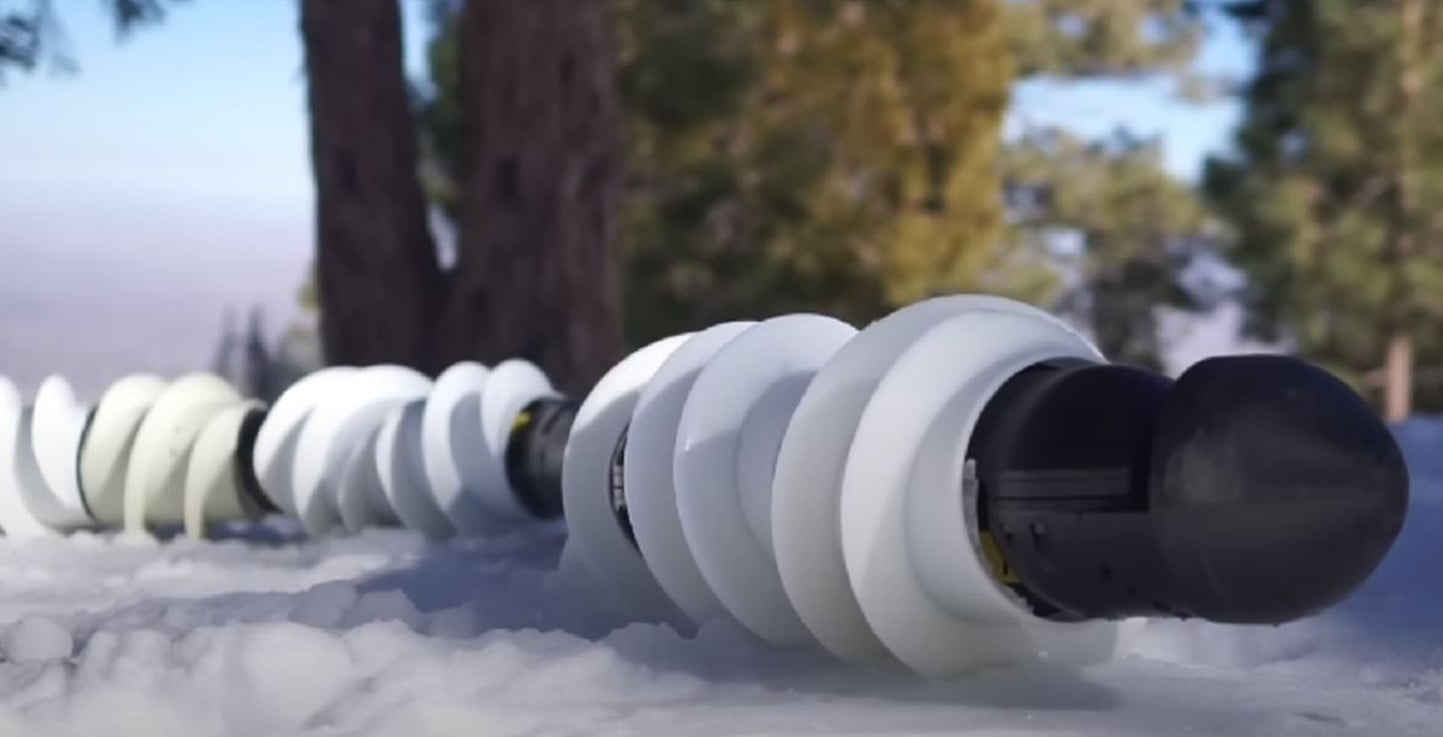NASA has developed a new robot, and this one is very different from any you’ve seen before! Instead of being like the robots we usually see in movies, which look like cars or small helicopters, this robot is shaped like a snake. It’s long, sliding, and looks a bit creepy, but it’s very useful.
This robot is called the Exobiology Extant Life Surveyor, or EELS. It is designed to glide through the narrow passages below the surface of icy planets, such as Saturn’s moons, in search of signs of life. Scientists believe there are subterranean oceans on some of these icy planets, and the EELS can help explore them.
How the EELS works
The EELS is a snake robot that is 4 meters long and weighs around 100 kilograms. It is made of ten identical segments that rotate using screw threads for propulsion, traction, and grip. It also has four pairs of stereo cameras and LiDAR, which uses laser pulses to create a 3D map of its surroundings. The robot uses this map to determine the safest route forward with its navigation algorithm.
The robot is also designed to be able to autonomously sense its environment and calculate risk. It can recover on its own in case of any problem. It’s like a self-driving car that has to decide for itself which way to go. He is also capable of going down a 100 foot vertical shaft without falling.
testing and development
The first EELS prototype was built in 2019, and since then the team has been running monthly field tests to improve its software and hardware so it can operate autonomously. Scientists hope to be able to send the robot to different terrains on Earth, the Moon and Saturn’s satellite Enceladus.
The scientists are also working on adding additional scientific instruments to the robot in the future. But for now, his main focus is improving the robot’s autonomous ability and mobility.
Why is the EELS important?
The EELS is important because it can explore places where other robots cannot go. It can slip through narrow passages that other robots can’t navigate, and it can do so in extremely cold conditions. On the other hand, it is capable of recovering on its own in case of any problem.
Scientists believe that some icy planets, like Enceladus, have subterranean oceans that could support life. The EELS could be a valuable tool to help explore these oceans for signs of life.
More information at jpl.nasa.gov

